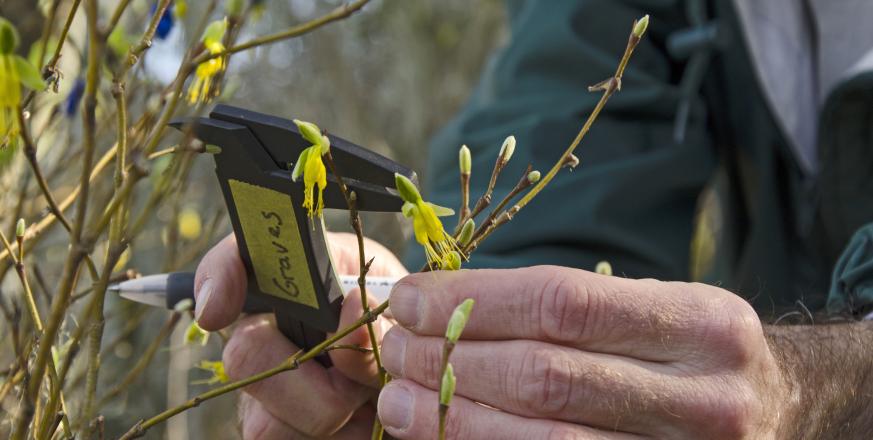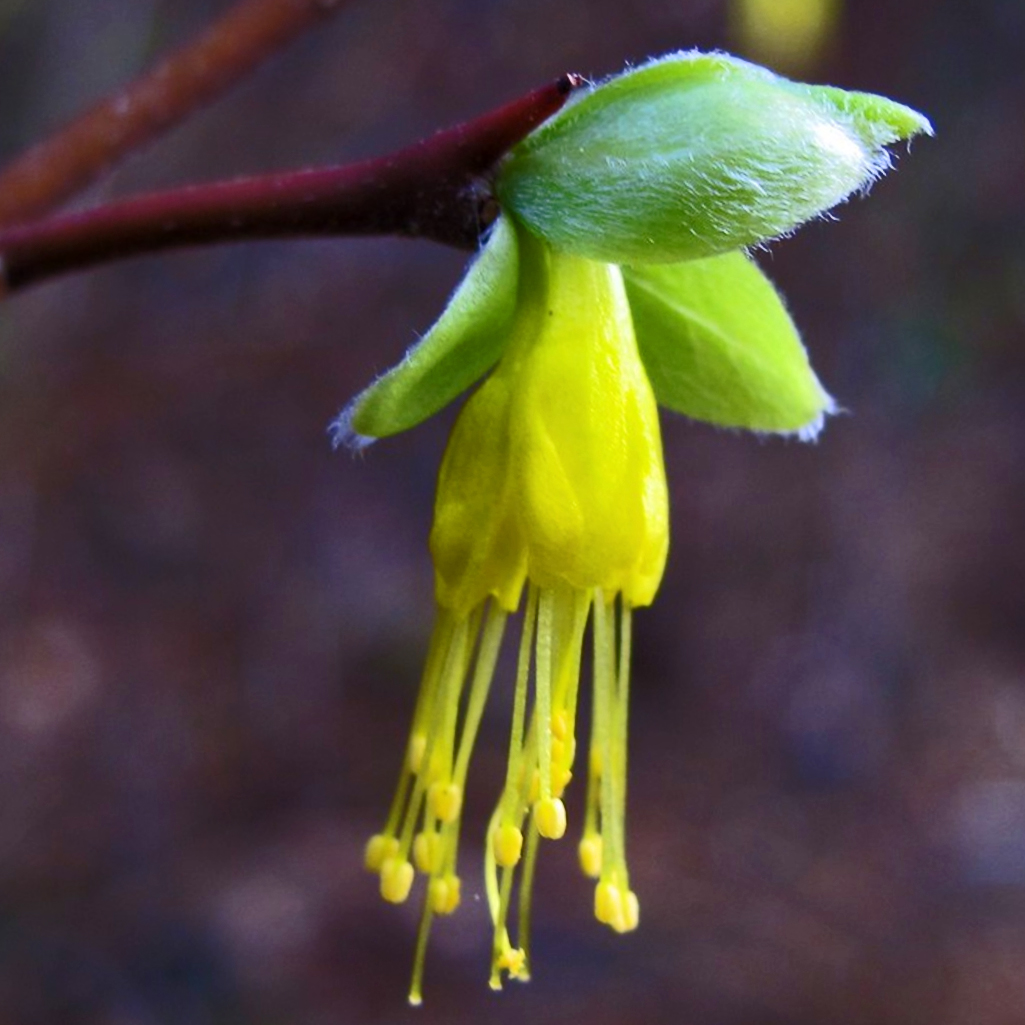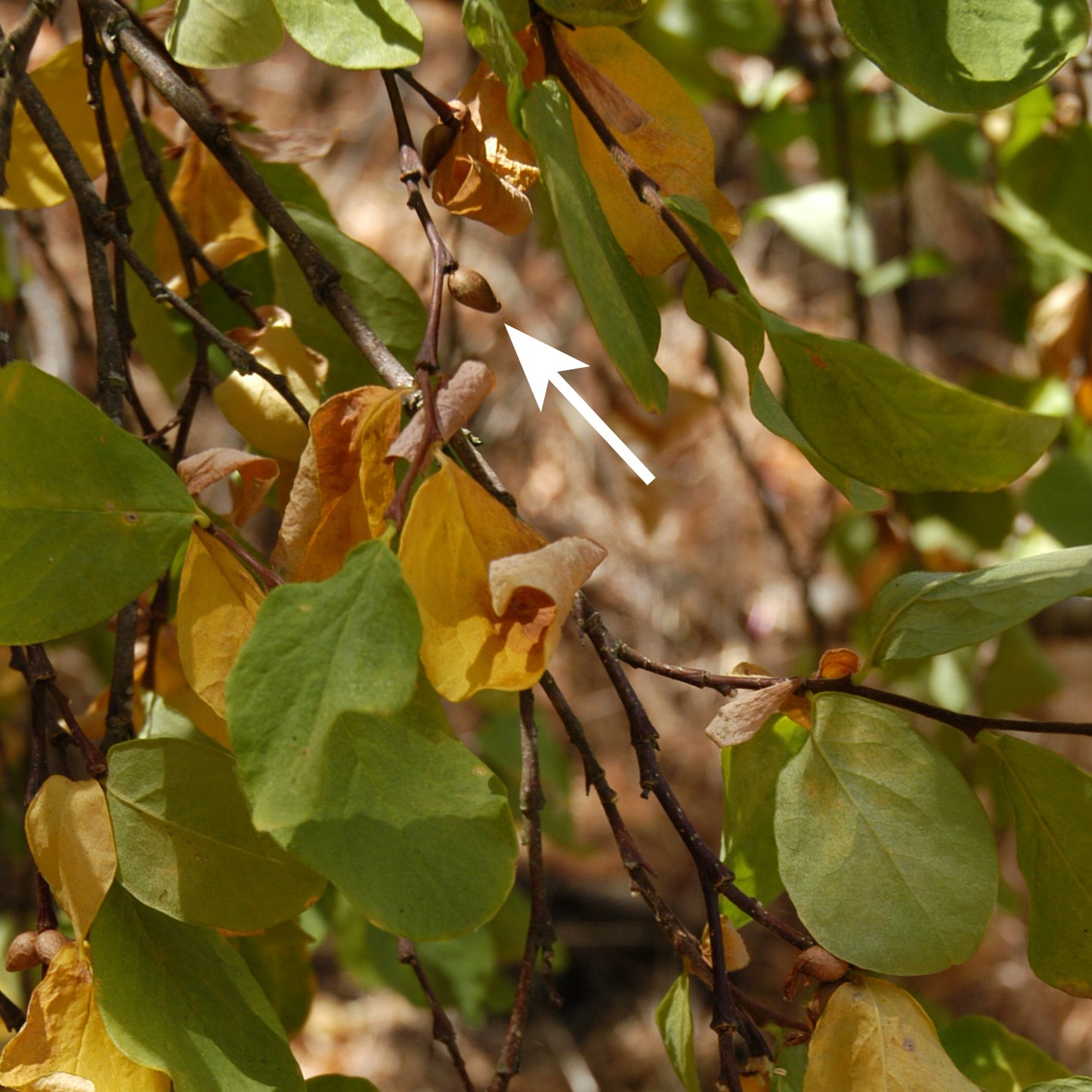Determinants of the distribution and reproductive success of Dirca occidentalis

Summary
Shrubs of the regionally endemic Dirca occidentalis (western leatherwood) occur in numerous plant communities within Jasper Ridge Biological Preserve. D. occidentalis, the only species of the plant family Thymelaeaceae indigenous to California, is appreciated for its displays of pendulant yellow flowers that portend the rejuvenation that follows autumnal and winter rain. Its patchy pattern of occurrence within a very small geographic range near the San Francisco Bay suggests that D. occidentalis relies on specific environmental conditions that are subject to rapid change due to increasing atmospheric CO2 and other greenhouse gases. Because the species is thought to reproduce primarily via seeds, low fruit set could threaten the continued existence of D. occidentalis as the climate of the Bay Area continues to change.
Data collected from 2007 to 2012 at Jasper Ridge showed marked variation in fruit set among groups of D. occidentalis is associated with differences among the shrubs’ microclimates. A complementary study is ongoing with 100 individual shrubs selected in 2012 within diverse Jasper Ridge habitats that range from riparian to chaparral. My primary objective is to model the phenology and fruit set of these shrubs in relation to precipitation and air temperature for at least one decade. I also plan to confirm modes of seed origin (crossing, self-pollination, apomixis), as well as describe the viability of pollen and the production and chemistry of nectar. Lastly, the frequency and causes of mortality of the 100 individuals over the decade are being documented. Results will enhance our understanding of how D. occidentalis reproduces, and how continued changes in climate may affect this rare member of the flora of the Bay Area.
Project Location (Sectors 12, 13, 14, 15, 22, 23, 31, 32, 33, 34, 40, 41, 50)
 |  |  |  |  |  |  |  |  |
 |  |  |  |  |  |  |  |  |
 |  |  |  |  |  |  |  |  |
 |  |  |  |  |  |  |  |  |
 |  |  |  |  |  |  |  |  |
 |  |  |  |  |  |  |  |  |






